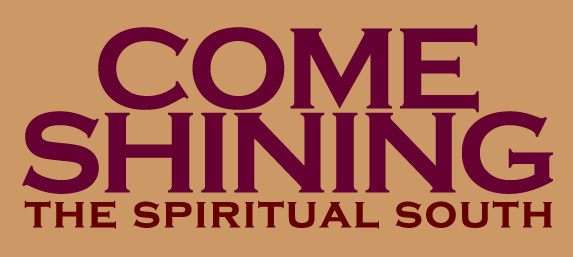
| Come Shining: The Spiritual South – Photographs by Deborah Luster
takes a mid-career look at the work of Southern photographer Deborah Luster. Luster has studied and documented folklife in the Southeast for many years, often working with poets and folk-artists. Luster's visionary, documentary photographs forge visual connections between such aspects of Southern culture as literature, gospel music, voodoo magic, and rural rituals, creating a body of work that offers insight into a subjective spiritual reality unique to the American South.
Born in 1951 and raised in the hill country of northwest Arkansas, Deborah Luster studied literature and creative writing at the University of Arkansas. While living in coastal North Carolina in 1989, she and her husband, folklorist Mike Luster, conducted a folklife survey of the Core Sound region, an area lying south of the Great Dismal Swamp and north of the Cape Fear River. As photographer and interviewer for the project, Luster made photographs of the people, the water, the land, and everyday life in small rural communities. Through this documentary experience Luster developed a powerful, emotional involvement with her subject matter, a connection that continues to draw her back to photograph North Carolina locales. In her desire to capture the inner spirit of her subjects, Luster explores the expressive nature of portrait photography, infusing each image with an oral story or literary connection. The portraits' narrative qualities are invented from fragments of many lives, both personally experienced and imagined. Luster believes that from these fragments, through the magnifying power of memory, mythic personalities emerge who teach and help us understand who we are. In addition, she discovers life forces in objects found in the rural Southern landscape. While Luster usually works with medium format cameras, she also uses a plastic Diana camera to create blurred, atmospheric images. Come Shining, the title of this exhibition, refers to a lyric from Bob Dylan's song, I Shall Be Released : "I see the light come shining / from the west down to the east." It is also related to the title of Southern poet and Brown University professor C.D. Wright's book length poem, Deepstep Come Shining (Copper Canyon Press, 1998), which resulted from a road trip experience Luster and Wright shared while visiting self-taught artists in North Carolina, South Carolina and northern Georgia. A frequent collaboration with Luster, Wright contributes an essay to the Come Shining exhibition catalogue describing Luster's working method and evoking her artistic spirit. Included with a selection of Luster's images, Wright's text calls special attention to the renewed possibility of radiance in our world. The Come Shining exhibition begins with black and white photographs from Luster's Lost Roads Project , begun in 1990. Images of daily life, from the rituals of Sunday church services to the rituals of the local fishing, boat building and framing industries, are seen alongside portraits of gifted community members such as poets, writers, magicians, and shamans. The distinctive faces and gestures of these striking portraits encapsulate personal life stories and reveal the ties that bind a community. Many of these images were published with literary works by Arkansas writers in The Last Roads Project: A Walk-in Book of Arkansas , edited by C.D. Wright (University of Arkansas Press, 1994). In addition to the images that can be found in The Lost Roads Project , the Come Shining exhibition includes recent photographs of coastal North Carolina and of the rural areas that surround Luster's current home in Monroe, Louisiana. The second component of the exhibition is the Retablo series of photo emulsion on aluminum with oil and ink, paired with poems by C.D. Wright. Recalling the format and function of traditional Mexican alter paintings on metal, Luster's works illustrate her friends' personal stories of miracles while honoring spirituality in everyday life. These images, along with the poems by Wright, were recently published in Conjunctions: Eye to Eye (Bard College, 1999). The final component of the exhibition is Luster's latest work in progress, One Big Step: Prisoners of Louisiana . Beginning in 1998, Luster visited prisons in Louisiana, including Louisiana State Penitentiary in Angola and east Carrol Parish Prison Farm in Transylvania, to take portraits of the inmates. While time constraints did not allow her to get to know her subjects intimately, she was able to engage hundreds of individuals, hear their stories and give each sitter a set of wallet-size contact prints. For this exhibition, Luster prints each portrait on small, hand-cut sheets of aluminum that serve as contemporary versions of tintypes. The works are then displayed in black steel cabinet drawers. Viewers interact with the works by holding the images in their hand and reading information about the subject on the reverse. Here Luster uses interaction with an accumulation of life images to create a powerful experience of universal spirituality. ACKNOWLEDGEMENTS This exhibition project was supported in part by the National Endowment for the Arts, a federal agency, and the Charlotte Convention and Visitors Bureau. On behalf of The Light Factory's board and staff, I would like to express sincere appreciation to Deborah Luster for her probing artistic vision and steadfast dedication to this project. Thanks also to C. D. Wright for her important contributions to the project, especially for her insightful essay about Luster's inspiring imagery. Finally, I gratefully acknowledge the lenders to the exhibition: Lucinda Bunnen, Atlanta, GA; Catherine Edelman Gallery, Chicago, IL; and Deborah Luster, Monroe, LA. Bruce Lineker
Executive Director
The Light Factory
Come Shining: The Spiritual South
Photographs by Deborah Luster Was originally exhibited at The Light Factory 16 October - 23 December 1999 All images and text are reproduced with permission. come shining home | gallery | essay | credits |
|||